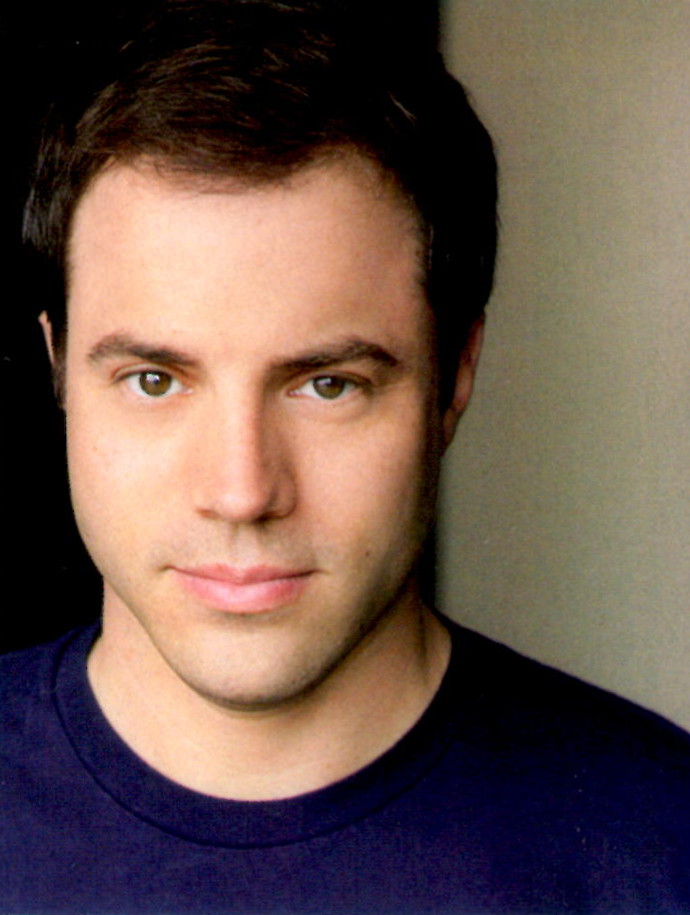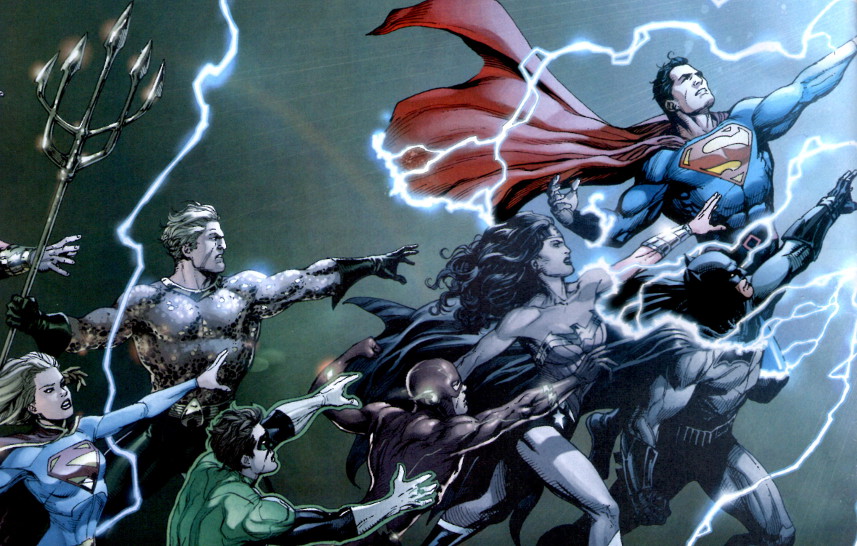Please, dear reader, have no worries. I haven’t co-opted this column to provide a review of videogames; not even for that really fun old Atari game Yar’s Revenge. No, in this case, YAR is an acronym standing for ‘Yet Another Reboot’ and it applies to the big new re-alignment and retconning effort that is coming out of DC comics.
According to DC Comics Previews, this effort, known as Rebirth, promises to evolve the original universe into something that mixes traditional values with a modern aesthetic.
The central figure of the DC Comics Previews is not Batman, or Superman, nor is it the Flash or Green Lantern, or any other from their stable of mythical figures. Rather it is DC’s Chief Creative Officer, Geoff Johns. Johns has been involved in many of the ‘adjustments’ and isolated ‘rebirths’ that DC has carried out in recent memory and he seems to be the central force in this particular one.
Johns is quoted in both an open letter, printed on page 1, and in the feature article talking about Rebirth on page 3.
In his open letter, Johns says
GREEN LANTERN: REBIRTH wasn’t only about the return of Hal Jordan and the Green Lantern Corps. It was building on a great foundation with tales like “Sinestro Corps War” and “Blackest Night” – stories that challenged out heroes, redefined their villains and introduced new threats and adventures built on the core essence of the Green Lantern myth.
And if we were going to do a “Rebirth” across the DC Universe, we needed to take a hard look at where is was now. And a “Rebirth” starts with bringing something back that’s been missing…
and
That’s epic storytelling.
That’s legacy and honoring the past, while moving it all to the future.
That’s hope.
That all sounds fine but before taking it at face value it is reasonable to spend some effort putting Rebirth in context.
There are two aspects to the context that are worth considering. The first is the storytelling aspect that Johns mentions, including that piece of the DCU that was/is missing. The second is the business aspect that Johns dismisses with his comments about branding or marketing but which are, nonetheless, important.
The first front – the storytelling aspect – needs to be placed within the real world timeline of the various soft and hard reboots and retcons that DC Comics has published in the last 30 or so years. During this 30 year period, the DCU has been significantly modified 7 times (counting Rebirth). That is approximately once every 4.5 years.
The first, and arguably the best, reboot was the Crisis on Infinite Earths (CoIE). This storyline grew out of a desire to clean up many of the continuity issues that had collected in the DCU for the prior 50 years. And although it was a laudable it didn’t quite accomplish this goal.
Since CoIE, DC has revisited that event, tweaking and re-tweaking the continuity. The following table summarizes the various efforts.
| Series Name | Years | Synopsis | Impact |
|---|---|---|---|
| Crisis on Infinite Earths | 1985-1986 | Krona of Maltus, peers back in time and somehow splits the universe into a multiverse spawning the Monitor and Anti-Monitor. The latter then kills off most of the doppelganger universes before being stopped. | Simplified DC’s 50 year continuity; ended the multiverse; fixed continuity issues.
Violates causality and reason (how can time travel from a future-time multiverse be the cause of the splintering of a the universe in the past?) |
| Zero Hour: Crisis in Time | 1994 | An insane Hal Jordan, no longer a Green Lantern but now the villain Parallax. He tries to undo the destruction of his home of Coast City by tampering with time. Stopped by the collective heroes of the DC Universe resulting in a new timeline. | Follow-up to Crisis on Infinite Earths
Cleaned up inconsistent future timelines such as the Legion of Superheroes.
|
| Infinite Crisis | 2005-2006 | A group of ‘lost characters’ eliminated in the Crisis on Infinite Earths return from a pocket universe into which they had been squirreled away after the simplification.
The Multiverse (original 52 universes) is respawned via the machinations of Alexander Luthor and Superboy-Prime. |
Rebuild of the multiverse; prelude to changing/eliminating series;
Lead in to Final Crisis. |
| Final Crisis | 2008 | Conflict amongst the New Gods, causes damage to the DC Universe. Darkseid manipulates the DC Universe into essentially being destroyed with a Deus Ex Machina/Superman restoring everything. | A softer reboot which tells the story of the final saga of the multiverse. |
| Flash Point/New 52 | 2011 | Barry Allen is the central character here. He awakes to find the DCU similar but clearly different from what he remembers. He finally sets things right but in the process merges the DCU with the Vertigo and WildStorm Universes creating the new 52 parallel universes. | Yet another change in the DC Universe. Launched the New 52.
WildStorm, which had separated from Image is one of the 52 new parallel universes. New 52 also started with a renumbering of all the titles. Considered a ‘soft reboot’. |
| Convergence | 2015 | Braniac gains access to all past/future timelines and alternate realities. He then experiments on the moribund ones for his own ends. | Undoes some of what happens in the original Crisis on Infinite Earths.
Ends the New 52 branding but keeps the New 52 continuity. |
| Rebirth | 2016 | Remains to be seen. | Tinkers with Flashpoint and maybe unites Watchmen universe with the DCU, |
In addition to the links contained in the table above, the interested reader may find the overview of the ‘Crisis Trilogy’ by Dan DiDio, the succinct summary of the retconning that is found in the overview/background to Convergence, and James Whitbrook’s post entitled How to Keep Track of All the Insane Changes DC Comics Has Been Going Through to be helpful.
So what to make of DC’s 30-year evolution? Well, the simplest and least cynical viewpoint seems to be that the original mess of untangling the continuity was a lot harder than anticipated. This conjecture is reasonable since the DCU was strewn with numerous examples of the three best ways to screw up comics. For instance, what to make of Earth-2 and all the other Earth copies? Should the reader really care about these doppelgangers? How can Superboy go forward in time to help the Legion of Superheroes in the 31st century without violating the 20th? And so on it goes. These storytelling devices were (and still remain) quite charming and maybe if continuity didn’t matter (different versions of the story of Oedipus didn’t matter to the Greeks) then it all could have been tolerated. But the insistence on logical consistency that lead to the CoIE demands a high cost. Each of the subsequent tweaks is needed to fix some problem in an earlier one and, in turn, each one spawns additional problems.
However, there is a more cynical explanation that deserves some discussion as well. DC is a for-profit company and they need to sell product. Nothing wrong here – capitalism is the backbone of the American way of life. But there is often a pattern in the entertainment industry of eschewing originality and to continue going to the well until it runs dry. Without much in the way of marketing support, CoEI did extremely well and it was both a commercial and a critical success – it became the proverbial well. This was during a time period when DC ruled the movie circuit (Superman franchise, 1978-1987) but was struggling with it comics arm despite some notable exceptions including Swamp Thing (1982) and Watchmen (1986-1987) under Alan Moore and Batman: The Dark Knight (1986) under Frank Miller. CoEI provided a much needed boost to sales and the DCU, along with the companion Vertigo imprint, soon had DC running high.
I enjoyed the run of almost all their books from CoEI until Zero Hour. This next tweak was the second trip to the well and the waters were nowhere near as refreshing. Like any stimulus based on solely on an emotional high and adrenaline, the thrills had be more shocking and the scope bigger in order keep the same level of excitement. Each of the following crises continued the escalation leading to the need to retcon more frequently.
Rebirth is just the last in a long line of ‘wash, rinse, repeat’ reboots designed to attract attention – this time by bringing in the one truly critically acclaimed work from DC in recent memory, The Watchmen. However, I am not sanguine for its chances of success. I don’t think the mythic content of Superman and Batman has gotten stale nor do I think that comics can only succeed through escalating novelty. Rather I think that there is combination of unimaginative management and uninspired writing that drives this cycle. Meaningful stories that could be told are dropped by the wayside because building a solid narrative requires time and skill. Fortunately, this downward cycle has to stop soon. Ultimately, there won’t be enough time to publish comics with the new status quo before rebooting to the next one. Hopefully, once the dust clears, DC will give up on the reboot gimmick and actually realize the gold mine they have.



